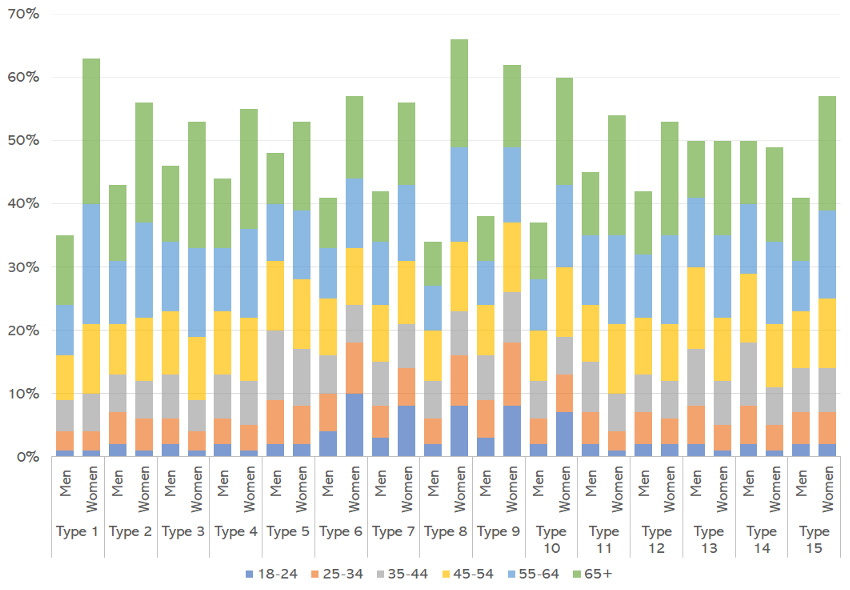
Tristan Hotham
PhD researcher at the University of Bath, researcher for Whotargets.me during the 2019 General Election.
Email: T.Hotham@bath.ac.uk

Section 6: The Digital Campaign
- Digital campaign regulation: more urgent than ever?
- Did the Conservatives embrace social media in 2019?
- #GE2019 – Labour owns the Tories on Instagram, the latest digital battlefield
- Spot the difference: how Nicola Sturgeon and Jo Swinson self-represented on Twitter
- “Go back to your student politics”? Momentum, the digital campaign, and what comes next
- Taking the tube
- The politics of deletion in social media campaigns
- Against opacity, outrage and deception in digital political campaigning
- The explosion of the public sphere
- Big chickens, dumbfakes, squirrel killers: was 2019 the election where ‘shitposing’ went mainstream?
One of the core processes that we know has been occurring over the last decade, but have had little evidence of its action, is A/B testing. However, thanks to (albeit limited) data sources such as the Facebook Ad Library, we finally saw behind the curtain of the targeting machine and how parties are using Facebook users as a data source to experiment with different political content. A/B testing is a method of comparing two or more versions of an advert against each other to determine which one performs better. Depending on what content is used, people will interact differently. Then statistical analysis can be used to examine which variation performs better for a given goal.
All the parties are engaging in this process, however a clear example showed up during the election campaign via the Liberal Democrats. 15 different versions of Jo Swinson were sent to a combined 128,000 people early in the campaign (Image 1). This interest in testing out different Jo’s shows us both the origins of their misplaced highly personalised campaign, and how A/B testing via Facebook can lead to content decisions on and offline.
All the posts featured the same message (Figure 1), and a link to the Liberal Democrat website to measure clickthroughs. The Liberal Democrats were clearly trying to find the right Jo for their campaign communications, the audience data (Graph 1) shows how the party was reaching different demographics via the different Jo’s. This is because of the Facebook ad delivery algorithm, user choices and targeting parameters chosen. Of the 15 adverts sent by the Liberal Democrats, they decided to retire types 1-10 and continue with types 11-15. This will be due to the clickthrough rate of these adverts, as well as the demographics reached.
The adverts that were continued reached a more equal group of people, especially more men than other versions of the adverts. The party had found the Jo’s to use, with this testing leading to many instances of Jo 12 and 15 seen on and offline (Figure 2). Even leaflets used image 15, showing the wider impact of the digital campaign. Although tis was prior to the Liberal Democrats being presented with evidence that Jo Swinson was a vote loser which led to her removal from leaflets and adverts late in the campaign.
Overall, this election showed us that A/B testing is now ubiquitous for the political parties, with it occurring on all types of messages right up to election day. Political parties using Facebook ads have today a powerful capacity to hone their messages. Unlike the past where expensive and hard to organise focus groups were the only avenue available for parties to test their messages; today all the political parties engage in multivariate testing of images, messages and content forms. Thousands of instances were seen, with the majority testing policy, colours, styles and messaging. Political parties have never had it so good.
Facebook, through targeted advertising, has allowed parties to engage in complex psychological experiments, hyper-charging their content to maximise their intended goals. This has both positive and negatives. On the one hand it gives parties greater opportunities to activate support, inform the public of policy positions, issues and candidates, test policy messaging and increase the campaign learning potential of content. However, A/B testing can also be used to hone negative messages, promoting a more polarised and negative campaign discourse. Today parties can fight as much on demobilisation as mobilisation, threatening the operation of democracy. This ability for parties to hypercharge their messaging is a new campaign norm, and one we should question. We the voters are being compartmentalised, fractured apart and sold different ideas, with this having stark impacts on the foundations of common ground of politics. It is our activity online that makes this process possible and as such we have a right to understand whether we are being A/B tested online and what for.



